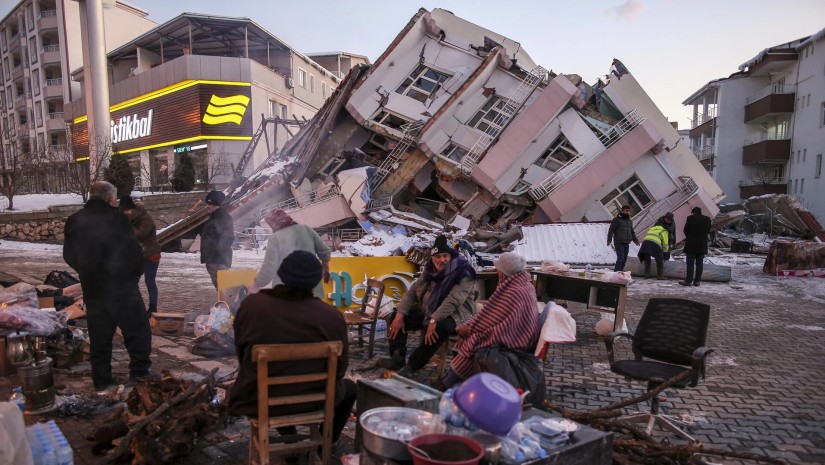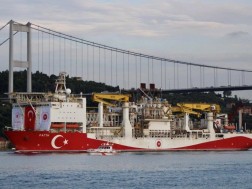As he calendar marks six months since the catastrophic twin earthquakes struck on Feb. 6, the affected regions of southern and southeastern Türkiye and northeastern Syria remain on a long and arduous road to recovery. The aftermath of the tremors, which claimed over 50,000 lives and disrupted the lives of 15 million people, continues to cast a shadow over communities struggling to rebuild.
Amid the rubble and heartache, the construction of village houses and earthquake-resistant dwellings has gained momentum, promising a glimmer of hope for those displaced.
The Ministry of Environment, Urbanization and Climate Change has taken steps to alleviate the plight of the affected communities by establishing construction and transformation offices across five provinces. These offices are poised to offer legal and financial counsel to beneficiaries of the reconstruction project, which encompasses the creation of 850 independent units, ranging from residences to workplaces, warehouses and shops.
On the other hand, Doctors of the World, an international network team, has established safe spaces to address these concerns, offering a range of services from psychosocial support and protection to medical examinations, shower and laundry facilities, and even a hairdresser. The aim is to create a haven where women and children can regain a semblance of privacy and comfort as they navigate the arduous path to recovery.
Since the immediate aftermath of the earthquakes, the organization has been a steadfast presence, providing medical care, psychosocial support and essential services. Over 17,000 people in the Hatay and Antakya region have been assisted, with more than 12,000 medical consultations and 5,000 psychosocial support sessions. In neighboring Syria, the organization has offered primary health care services to over 83,000 individuals in Afrin and Idlib.
Despite challenges, positive progress in the gargantuan task of recovery is being made. In a report compiled by Anadolu Agency (AA), teams captured images of Kahramanmaras, Hatay, Malatya, Adiyaman and Gaziantep's Nurdagi and Islahiye districts, which suffered the most destruction in the earthquakes. When the images taken right after the earthquake are compared with the new images, it is revealed that debris in the earthquake-hit region has been mostly removed.
Kahramanmaras
In Kahramanmaras, the earthquake epicenter, 53,035 apartments were destroyed, and 57,702 were severely damaged. Some 20,461 businesses were also affected. In the city, some 12,659 people lost their lives, and the debris removal of ruined and damaged buildings demolished later has been completed. The demolition and debris removal of heavily damaged buildings is ongoing.
Hatay
The studies found that there were 13,517 destroyed buildings, 8,162 buildings that needed to be demolished and 67,346 structures heavily damaged by the disaster.
In the city, the debris removal of the ruined or damaged buildings demolished later has been completed, and the work of demolishing the heavily damaged buildings and removing the debris continues.
Malatya
One of the provinces most affected by the earthquakes, Malatya has 421,616 apartments, out of which 127,293 had fully collapsed, urgently needing demolition. Among the 35,680 heavily damaged buildings in Malatya, 2,690 of the 29,764 tendered for demolition have been torn down. The earthquakes, referred to as the "Catastrophe of the Century," caused the destruction of around 20,000 business premises in Malatya, while numerous others also suffered significant damage.
Adiyaman
In Adiyaman, 5,953 apartments collapsed, and 20,201 were heavily damaged. Businesses also suffered with 70% in the province either collapsed, heavily damaged or required demolition. While the debris removal work of the destroyed and demolished buildings in the city has been completed, the demolition and debris removal work of the heavily damaged buildings continues.
Islahiye and Nurdagi
In the earthquakes, 3,919 lives were lost in Gaziantep, with 2,014 in Nurdagi and 1,433 in Ishaliye districts. Gaziantep had 4,060 collapsed buildings, and over 21,000 were deemed for urgent demolition or labeled heavily/moderately damaged. Drone footage after six months revealed significant gaps in Nurdagi and Ishaliye, the hardest-hit districts.
While the journey to recovery remains fraught with challenges, the resilience and dedication exhibited by the affected communities, coupled with the unwavering support of Ankara and organizations are pivotal in rebuilding lives and restoring hope in the region's quest for renewal, Daily Sabah reports.























